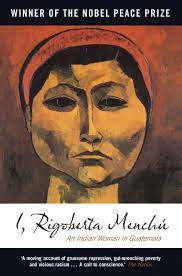 |
| Chichen Itza |
As we left Escarcega in the rearview mirror, the road narrowed and we settled in for the long drive ahead. We decided we’d take a break halfway when we got to some little known pyramids, have a sandwich, and let Max, then just a kitten, walk around.
We saw no other cars on the road and around 4 p.m. we passed Chicanna. Soon after, I spotted the tower of Xpuyil. "Want to stop?" I asked Paul.
"It is weird," Paul said. We both watched the younger man dart through an opening in the fence and run along the path that led to the site.
With the truck still idling, we viewed the scene warily. "I don't feel good about this."
Paul started pushing things into the way-back. I followed his lead and closed the cooler, holding my sandwich in one hand as I tossed things into the car.
"Let's get out of here. Something’s not right. Are they scouting for artifacts? Why the trailer?”
"Not good,” Paul agreed. “And that tarp? Max is inside. Let's go."
The International had parked at just the right angle so we couldn't see the driver, as though that outcome was planned. If these guys were grave looters, we didn't want to be around when INAH (National Institute of Anthropology and History) discovered them, or worse, the federales. Stealing artifacts is a serious crime.
Paul started the car and headed down the narrow driveway that led to the highway. The International was still idling when I turned around to give it one last look.
"We don't want to know," Paul said as he eased onto the uneven asphalt, revved the engine and we headed towards Chetumal.
IS ANTQUITY THEFT THE WORLD'S SECOND OLDEST PROFESSION?
Art theft is big business. It’s a ‘trade’ worth billions. Ask any dealer of antiquities. And as the international appetite for Maya culture grows so does the hunger for illegal artifacts.
As long as there's poverty in undeveloped countries where ancient civilizations once stood, you can bank on it. Some art dealers call it the world's second oldest profession.
“Any country in civil war or conflict is ripe for antiquities looting,” says Tess Davis, legal expert and archeologist from Boston University. When conflict erupts in an archeological rich country, the world art market is suddenly flooded with antiquities from that country. Looting becomes a means of subsistence when homelands are war-torn.
THE RISE OF NARCOTICS TRAFFICKING
Most organized trafficking groups dealing drugs and other commodities are business savvy these days and have diversified portfolios. As with real estate, logging and iron ore, the prices antiquities command are too high for them to ignore.
Compared with well known ancient civilizations in Europe and Western Asia, archeological interest in Maya culture came relatively late, partially due to the forbidding nature of the jungles. The outside world was first exposed to Maya pyramids through the writings and drawings of explorers John Lloyd Stephens and Frederick Catherwood in the 1840s. Their memoirs about their early adventuring shone a light on the Maya.
Soon other adventurers trekked through the Peninsula, conducting rudimentary recordings of archeological sites with limited removal of Maya artifacts. The first excavations were not conducted until the 20th century.
THE BEGINNINGS
At the time, 1957, Nelson Rockefeller founded the Museum of Primitive Art in New York. This was a watershed for the collection of Maya and other primitive cultural properties. The Maya were on the market.
THE MAYA PURGE
Clemency Coggins, a professor of Archeology and Art History at Boston University, wrote decades ago,"In the last ten years there has been an incalculable increase in the number of monuments systematically stolen, mutilated, and illicitly exported from Guatemala and Mexico in order to feed the international art market. Not since the 16th century has Latin American been so ruthlessly plundered.”
RANSACKING RUINS
Unfortunately this meant that large carved stone stelas that depicted the events of Maya rulers and their recorded histories along with large architectural treasures from Maya temples were plundered from where they stood.
But looters cared not for the history of the Maya. They had one mission only: how to remove stela that could be 20 feet high, weighing several tons from inaccessible jungles. Taking a power saw to a stela and cutting it vertically removed the face of it. Often they would cut that into quarters to make for easier shipping. The pieces could be sold off separately. Sometimes the inscriptions along the sides were damaged by the mutilation.
CHICLEROS PLAY BOTH SIDES
With antiquity looting in the news, museums world-wide are being forced to return archeological gems to the country of origin. It may be too little too late, but with applied pressure from the U.N. and worldwide cultural ministers, slow progress is being made. And now at long last, the cat’s finally out of the bag.



















